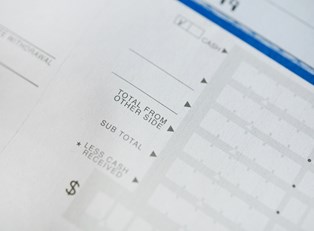Saving money will always be a wise decision. Emergencies arise. Vacations beckon. Retirement awaits. There are several types of accounts offered by savings institutions which can be tailored to fit your situation. A solid and dependable plan of savings will help you accomplish the goals you have set for yourself, your business, and your family.
There are three types of savings accounts:
- Basic Savings Account
A basic savings account is easy to set up and maintain. You may accomplish this by visiting a local bank branch office, however, some institutions also allow you to do it by phone or online. It requires an initial minimum deposit, the amount of which varies depending on the bank and the type of account. Some accounts may require a minimum balance to avoid a service charge. Although check-writing privileges are usually not included, some accounts may allow a small number of checks to be written each month.
The conscientious consumer will shop around to find the best interest rate for the account he has chosen. One of the disadvantages of a basic savings account is that the interest rate may be extremely low, many times less than 1%. If the interest rate is not fixed, interest earned may depend on the balance in the account. If the interest rate increases as the balance increases, a higher balance will yield higher interest. While traditional savings accounts may offer from 1.5% to 4% interest, the average is more likely about 0.25%.
- Money Market Accounts
Money market accounts can be used by people who sell stocks and reinvest the proceeds. While awaiting reinvestment, the cash can be utilized for emergencies or short-term goals. They earn more interest than a regular account, but with the higher interest rates come more restrictions. They require higher minimum balances, possibly as much as $2,500.00, and they include a monthly service fee. Though they earn interest from 0.37% to 0.62%, these accounts bear a slight risk because they are not FDIC-insured. Some money market accounts allow checks to be written, but many impose limitations on the frequency of withdrawals.
- Certificate of Deposit
A certificate of deposit is a savings account with a fixed interest rate and a fixed maturity date. Since the account holder is guaranteed to get back what he puts in plus interest, it is considered the safest investment. Money is deposited, the interest rate is set, and the cash remains in the account until its maturity date, which can range from one month to several years.
This type of account is useful for setting aside cash for long periods of time. CDs are FDIC-insured, are considered low risk, and can be taxable or tax-free, contingent upon the choices of the account holder. Interest rates will vary depending on the institution and the type of account. While a 2-year CD may average 1.19% to 1.24%, a 5-year CD may earn upwards of 2% interest. If the account holder chooses to withdraw funds prior to the set maturity date, there are additional fines.




